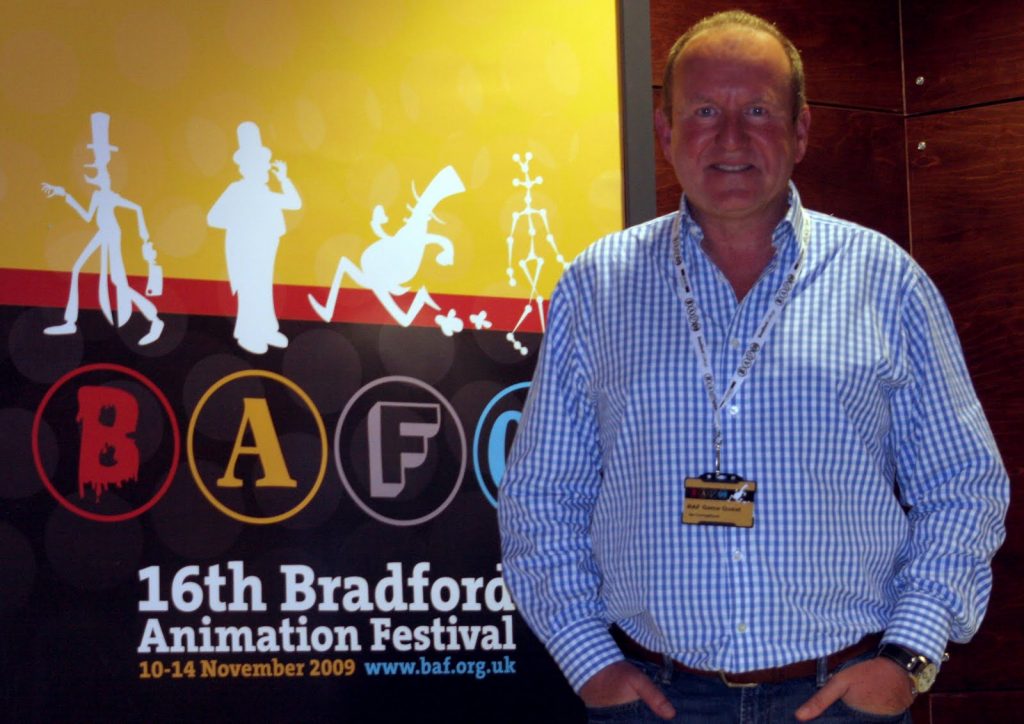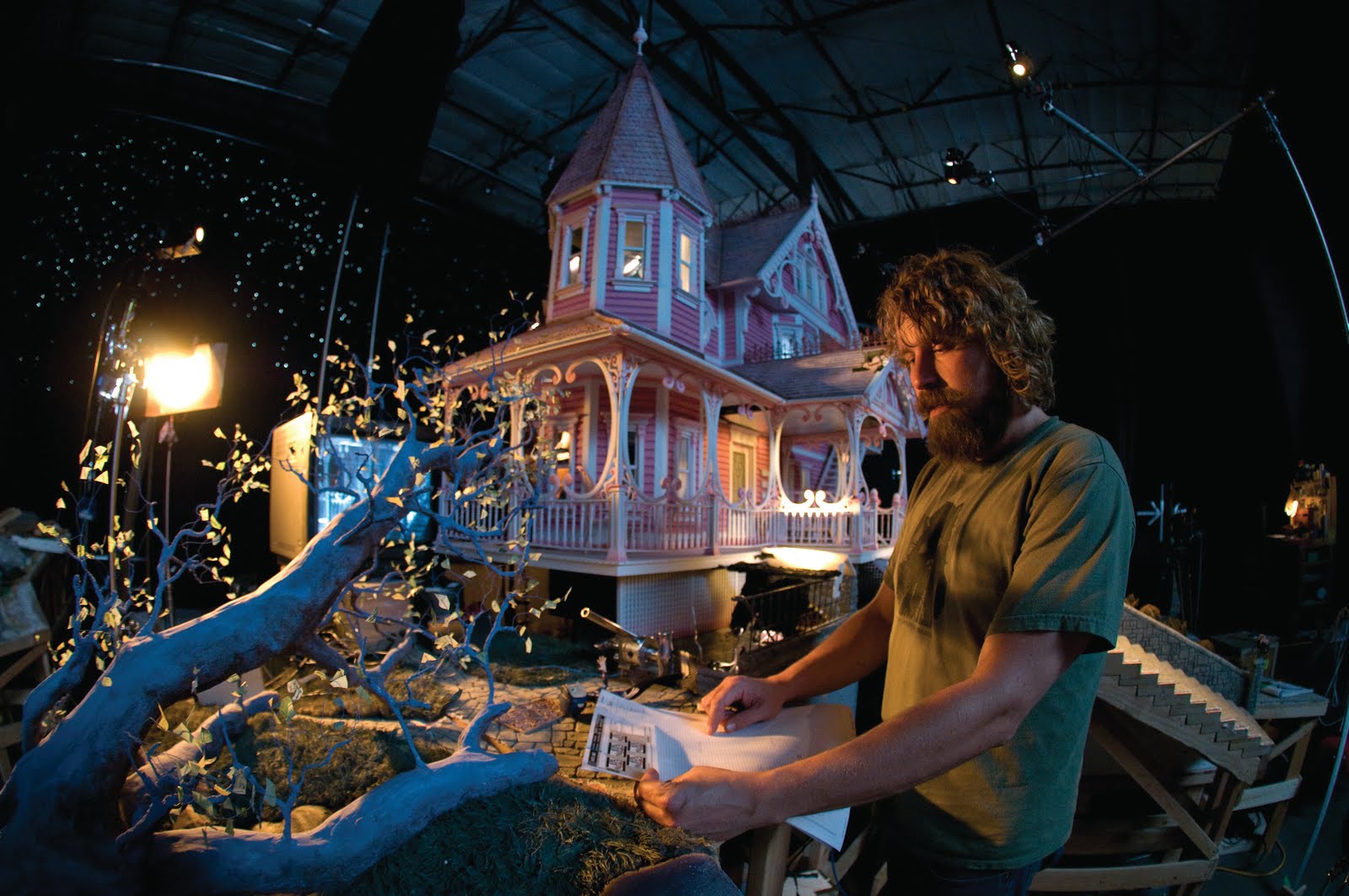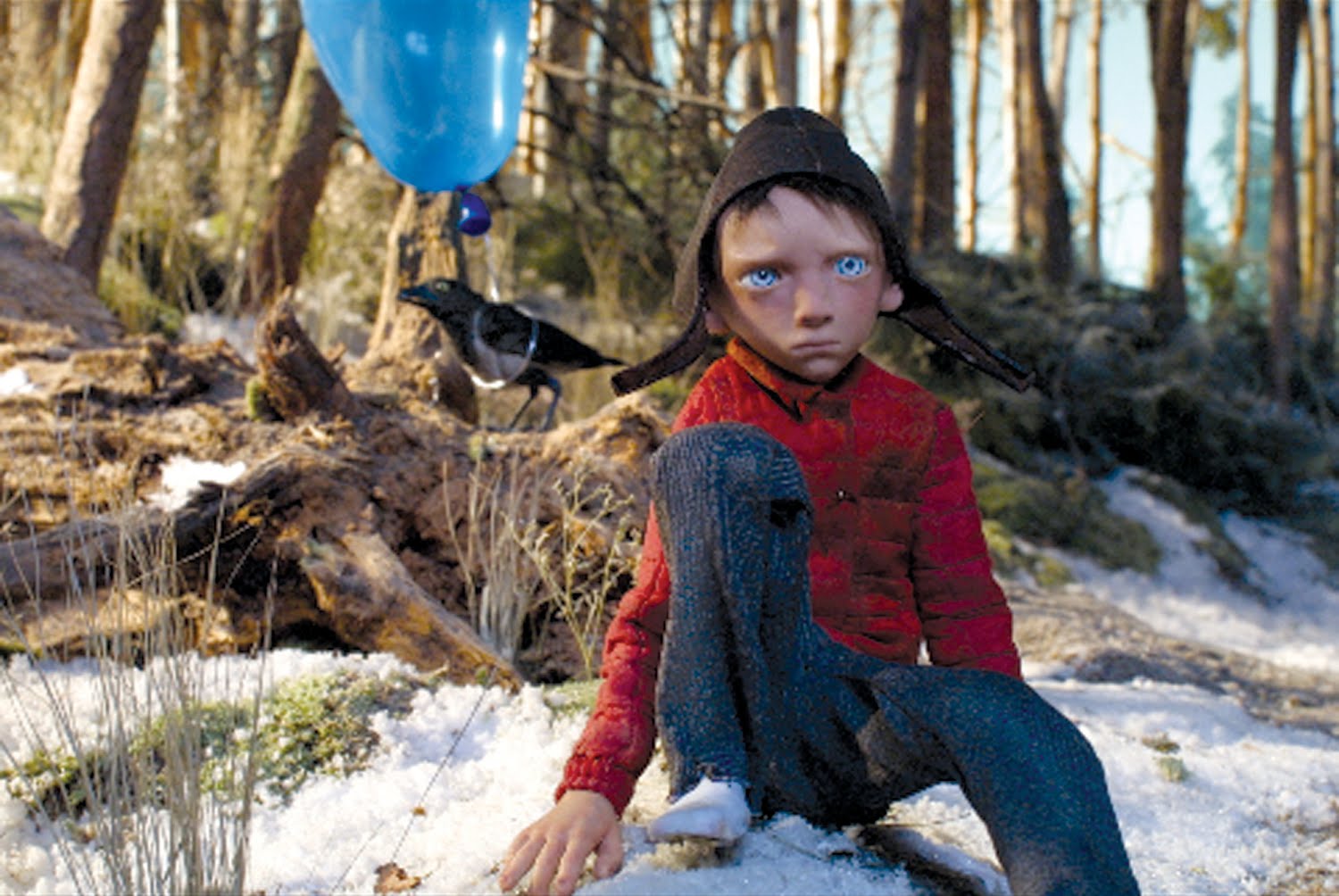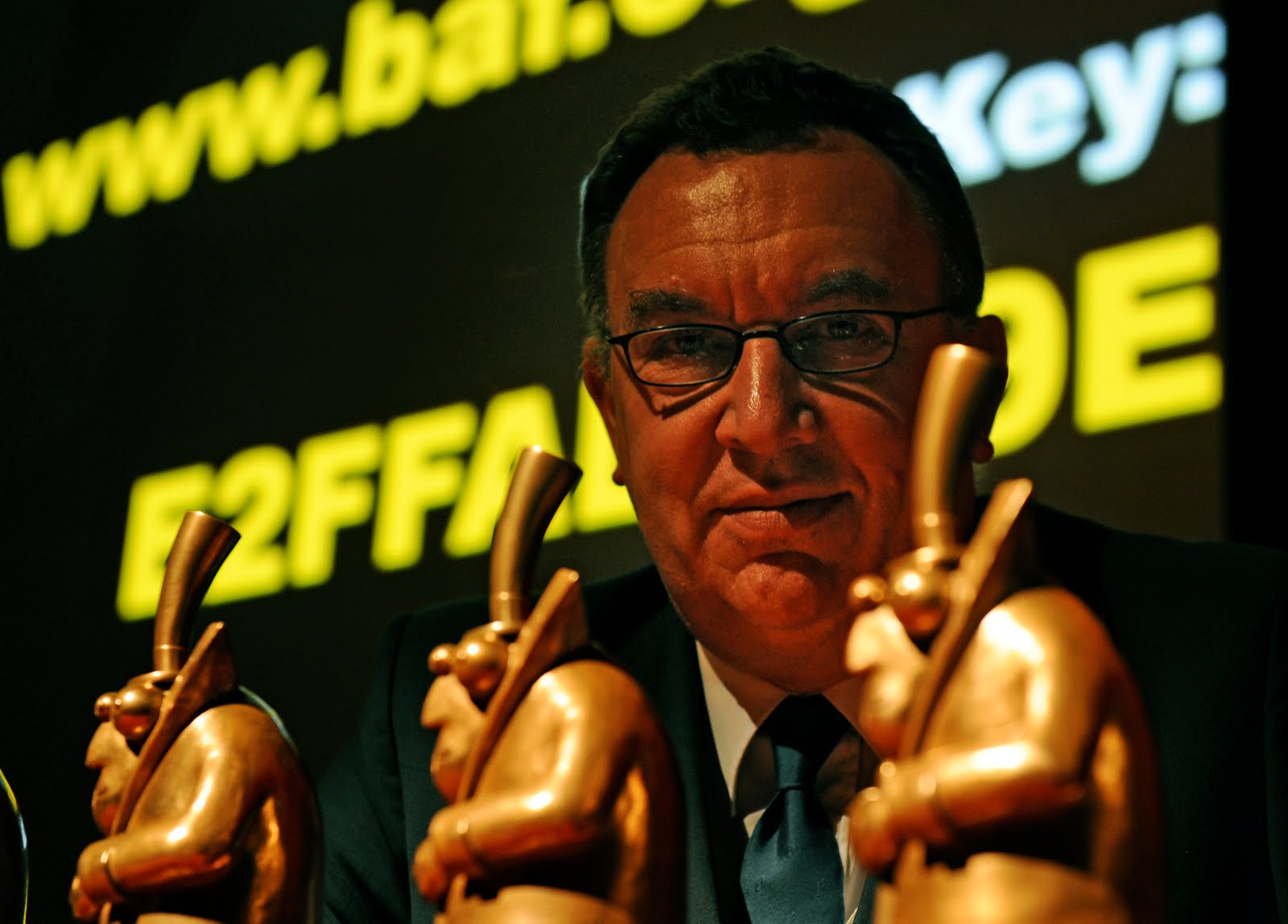Day 1: The legend that is Ian Livingstone

Towards the end of an inspiring opening day, Ian Livingstone OBE takes to the stage—he’s a legend within the British gaming industry.
Having begun his career as co-founder of Games Workshop in 1975, Livingstone is now Creative Director of Eidos, the company responsible for developing world-famous gaming franchises Lara Croft: Tomb Raider and Hitman. We’re in the presence of a pioneer in interactive entertainment.
Livingstone whets our appetite by regaling us with tales and images from his early career with Games Workshop, before launching in to the first lesson for this audience of budding games developers: owning your own intellectual property allows you to control your destiny and increase the value of what you’re producing.
His second lesson is pithy: ‘the three most important things in gaming are gameplay, gameplay and gameplay’. It does not matter how pretty or complex your game is; it must be compelling. This explains the popularity of games such as Pong (1972), Space Invaders (1978), Pac-Man (1980) and Lemmings (1991), to name a few.
The murmurs in the audience as each clip appears on the Pictureville Cinema screen are palpable. This audience may be young, but these games are timeless classics.
Livingstone next takes us on the pictorial journey we have been waiting for—a look at Lara Croft through the years. Lara Croft is one of the most famous icons in gaming, and is certainly a lesson in how to market your character.
‘Of course,’ says Livingstone, ‘merchandising and licensing are ways of leveraging intellectual property, but Eidos wanted to maintain integrity…’ before bombarding us with a barrage of Lara Croft merchandise, and even an audio clip of Lara Croft’s album (not released in this country, to the relief of some in the audience!).
There’s no avoiding that ‘gaming is such a huge industry which now dwarfs any other media’. We currently spend $50 billion per year on gaming, and this is expected to rise to $90 billion by 2015.
Livingstone attributes this to a constantly evolving market which now appeals to young, old, male and female, and finds itself moving into arenas such as social networking sites, mobile phones and websites. Livingstone even believes that gaming is currently the only media which vastly improves over time, while film and music are relatively static.
After a brief selection of trailers for new and upcoming games, it’s time for a quick Q&A.
The first audience member to raise their hand is interested in the changes that have taken place throughout the Tomb Raider games. Livingstone uses this as an example of one of the difficulties faced by developers; producing a compelling sequel. ‘You can’t please everybody all of the time, only most people most of the time. That’s what we’re trying to do at Eidos, to make the best games possible.’
Our next hopeful wants to know about the future of videogames. Livingstone explains how we are moving from games being sold as a product to being sold as a service—World of Warcraft is one incredibly successful example; it is no longer the case that games are produced, marketed, sold and forgotten about.
Two audience members are concerned about some important issues faced by the media industry as a whole—piracy, personal intrusion and safety. Livingstone asserts that we should be tough on piracy, and that with the saturation of gaming it is only a matter of time before a classification system (such as PEGI) comes into play for social networking and flash sites.
Finally, questioned about the development of 3D in the film industry, and whether he believes this will be matched in the gaming world, Livingstone admits he’s not too fond of gaming ‘with things on his nose’. However as his enlightening and entertaining talk has illustrated, we have in our midst a passionate gamer, whose career is punctuated with gaming success stories.
In his own words, ‘you never stop playing, you’re never too young to start and never too old to stop’.
Day 2: Tuna Technologies

I was fortunate enough to take part in a workshop delivered by Sarah Quick, an artist from the Sheffield-based animation studio Tuna Technologies. Sarah is currently working on the videogame Cletus Clay, in which the characters and scenery are made of clay.
We got an insight into the making of Cletus Clay and were able to ask for tips. Sarah explained that she makes the models, usually out of one colour, and then photographs them from several angles. The photographs are scanned in and then touched up in Photoshop.
Tuna Technologies decided to make models from clay and not from CGI as because they felt the technique and home-made quality of the end product produces admiration and respect from its audience.
Sarah expertly answered everyone’s animation queries; one of the attendees needed help with crafting shoes for their own project, at which point Sarah whipped off her trainer, put it on the table and the masterclass continued!
During the workshop Sarah showed how to create sunflower and crab models out of clay, two things she has included in the videogame, as well techniques such as wood and tyre effects. She made her workshop accessible to all as she had a varied audience; from one person writing their dissertation on CGI and animation, to a boy with dreams of following in Sarah’s footsteps.
Sarah later told me that this is first time she has taught something like this and despite coming over cool and calm, she was nervous. However we noticed nothing, and we came away with a crab, a sunflower and an insight into the world of animation!
Day 2: Indie Gaming

First up on the Great Hall stage at the University of Bradford was Stuart Varrall from Fluid Pixel Studios. Based in Middlesbrough, Stuart’s company specialises in creating original games for the iPhone and mobile platforms.
Stuart talked about his Lemmings-esque puzzler Kami Crazy, which was downloaded more than half a million times in the first three weeks of release, before showing exclusive footage of his latest cyberpet simulator, Animentals.
Visionary games director Charles Cecil gave an enlightening talk about relaunching classic adventure game Broken Sword on the Nintendo Wii and DS, and Beneath a Steel Sky on the iPhone.
Charles then introduced Ravi Govind and Aron Durkin, two animators and University of Bradford alumni who worked on the game and used it as a stepping stone into the games and animation industry. Ravi delivered an engaging step-by-step account of creating new characters for the game; from initial concept art to 3D modelling and skeleton rigging.
After lunch, games designer, writer and lecturer David Surman gave a passionate speech about the future of games, their position alongside other media and how the key to massive mainstream acceptance lies in the control system.
David then interviewed Erik Svedang while playing his multi-award winning game Blueberry Garden. Erik revealed that a major influence for his game was Shadow of the Colossus, and that it took him three months to make—working solidly on his own in his apartment from 08.00 to 17.00 every day.
Sean Murray, Managing Director of new British startup Hello Games, then stepped into the breach to deliver an inspiring presentation about the creation of Joe Danger. This soon-to-be-released independent game was a colourful and fun mixture of Trials HD and an Evel Knievel toyset. Demonstrating an impressive level editor that lets players create their own courses, Joe Danger looks set to be a surefire hit when it’s released next year.
Alex Wiltshire, online editor at Edge magazine, then chaired an honest and frank panel discussion about the challenges of setting up your own games studio in the current economic climate. With participants including Sean Murray, Stuart Varrall, Simon Barratt (Four Door Lemon) and Pete McClory (Panoetic), the panel reiterated the need for passion, long hours and sacrifice needed to set up a successful business. Provoking a stream of questions from the audience, the discussions drifted into the University bar to conclude the day.
Day 3: Claire Jennings and Brian Van’t Hul

We had the pleasure of showing Coraline in 3D to a packed Pictureville Cinema attended by festival pass holders, museum visitors and staff, including Director Colin Philpott.
Shortly before the film, I headed upstairs to watch a photoshoot with three of the Coraline puppets and two of our very special guests: Claire Jennings (Coraline Producer and Laika Inc’s President of Entertainment) and Brian Van’t Hul (Laika Inc’s Visual Effects Supervisor). Meanwhile, this year’s jury waited patiently outside to discuss the official selections.
Earlier, Claire sat in conversation with Professor Paul Wells from the Animation Academy at Loughborough University, to discuss her career history and the making of Coraline.
Claire ‘fell into animation having worked in the music industry… [She] fell in love with it’, and believes her proficiency as a producer lies in bringing together the diverse skills of organisation, creativity and communication.
When asked if she thinks finding money is the hardest part of getting a film into production, Claire stressed that ‘money is obviously incredibly important, but you can kick start projects if you have a lot of passion’.
Claire spoke briefly about her experiences working on the popular animated series Pingu, where she was invited to try and adapt the character for American audiences. However, ‘the essence of Pingu is what makes it successful… to water it down doesn’t always work. I think I’m best at maintaining that essence’.
Claire told us that she used to believe she’d become a successful producer when everything ran smoothly from beginning to end, but now realises that ‘it’s just about managing chaos’.
Of the current climate within the world of animation, Claire said that although budgets have decreased, and studios are having to employ clever marketing techniques to sell a film, big awards in America are starting to take notice of different-looking films and there is now a maturity to the way animated films are being made. Our opening night film Mary and Max is a terrific example.
Claire’s advice for potential producers is that they should be determined and have real belief in what they are trying to make, no matter whether it’s a small budget indie feature or a major Hollywood player, because it is that belief in projects which eventually gets them off the ground. ‘At the end of the day, you want to look back over the years and think you’ve spent your time well.’
Day 4: Priit Pärn

One of the best things about the festival is the way special guests from all over the world get the kind of exposure that television and conventional cinemas in this country cannot offer. This gives the audience a chance to sample the work of artists that they may not otherwise have the opportunity to enjoy.
This year was no exception: delegates have been able to view the films of esteemed Estonian animator Priit Pärn and listen to him in conversation with Prof. Paul Wells, making the work of this animator more accessible to an audience of students and young animation fans.
Pärn started his career as a biologist while creating cartoons and pictures as a sideline. Gradually, as interest in his more creative work increased his workload he managed to move into animation full time and made his first film, Is the Earth Round?, in 1977. The film was subject to scandal as the producers, the state film department, used it for propaganda purposes; however, little did the state know that Pärn made his own films without their knowledge using the resources earmarked for more propaganda.
Pärn’s cartoons and etchings have a unique style that would later translate over into his film work. A direct quote from the man himself, ‘every picture is a small film’, gives you an idea as to how his approach to his caricature work made the leap to film all the more successful.
Those viewing Pärn’s style for the first time may feel they are already familiar with it. Indeed, his work has been embraced by the creators of such animations as Rugrats and Aaahh!!! Real Monsters; Pärn’s colour palette and approach to character design has clearly had an effect on the production of animation. Pärn admitted to drawing all his ideas from his head, rather than from life or reference, something that has helped him develop his style in a most creative fashion, without many restrictions from outside sources.
Back in his home country, Pärn is able to use his appeal in order to now create whatever he wishes. When a client approaches him for an advertisement, he is able to create unhindered, a clear demonstration of the success of his style.
Before screening his films at the museum, Pärn insisted that his animation has no symbolism and that he’s only interested in telling the story. Additionally, he likes films to be cleverer than the person watching, so that the audience is kept guessing. These are two perspectives that any young students should take on board in the creation of their own films.
Day 5: Tony Fish

Many huge names in the animation industry owe a debt to this year’s Lifetime Achievement award winner. Tony Fish has worked with such names as Bob Godfrey, Geoff Dunbar, Erica Russell and Suzie Templeton, among other luminaries in the animation field.
We held a screening of his work on Friday and the audience were treated to a documentary put together to commemorate his work with excerpts and full versions of his finest animation.
Even those who are not versed in the world of animated shorts will recognise Fish’s work on such epics as Pink Floyd: The Wall, and Sir Paul McCartney/Geoff Dunbar’s Rupert and the Frog Song and Tuesday. Fans of Bob Godfrey were also thrilled to see Great, Roobarb and Henry’s Cat.
The special documentary featured some charming stories from the man himself about his involvement in these productions, as well as the many others he has played a key role in.
He spoke of the task of editing Suzie Templeton’s more recent Peter and the Wolf and the attachment one particular animator had towards the character he was animating; the poor animator nearly had a nervous breakdown when he had to film the character’s demise!
The documentary helped us all understand the amount of effort Fish had to put into Peter and the Wolf; having to match the film with the slightest change in music seemed no easy task.
Tony Fish didn’t have a great deal to say in person when he collected his award; he dedicated it to his mother and thanked everyone he had worked with over the years but cut out any unnecessary chit-chat and stuck to the important things. Just like any fantastic editor.
Day 5: Award winners

The penultimate highlight of the festival is the awards ceremony. The best of the best get chosen by the jury and, in the case of the audience award, the audience!
The show, hosted by Barry Purves, is always full of surprises. This year, among the special guests and jury members that presented the awards was the one and only Dangermouse, who arrived to announce a winner! (Albeit in an accent slightly different to his usual one—perhaps he’s moved to Manchester since leaving our screens all those years ago?)
This year many excellent professional films fought for a gong: CGI charmer French Roast won the award and those disappointed not to see the highly-tipped Alma win were happy to see it take away the Grand Prix instead.
Student films could easily give the professional films a run for their money, and it was the quirky Bruce that won the student prize.
In the short film category it was snappy biopic The Stupid Table which took away the prize, beating CGI numbers such as The Pianographer and hand-drawn mini masterpieces like Highly Overated. The music video category was also filled with as much variation; in the end ‘Hey’ walked away the winner.
The commercials category was taken away by ‘Audi Unboxed’ and it was Russia’s high-action CGI film Masha and the Bear—How They Met which won the TV Series category. Films for Children was won by Studio AKA’s Lost and Found which, I’m sure, will stay in the memory of anyone who watches it.
After the awards, it was on to the closing night party, where high-profile guests shared the fun with students from all over the country.
Bradford BarCamp
The final day of the festival saw over 100 BarCampers descend on the museum and Bradford College’s WOW Academy. For the uninitiated, a BarCamp is a free, friendly, democratic conference where the speakers and sessions are created on the day.
Split across five rooms, sessions last thirty minutes and delegates fill up the timetable at the start of the day. There is simply one rule; if this is your first time at BarCamp, you have to speak!
BarCamps generally focus on technology, and topics ranged from iPhone app development, web design and animation to producing computer games and getting the most from Twitter. I did have a presentation planned out in my head but by the time I reached the timetable all the free slots were gone!
This gave me time to enjoy other people speak and I dipped into sessions exploring how to hold meetings in Second Life, and a clever PowerPoint presentation explaining the art of PowerPoint presentations.
This was the first BarCamp to be held in Bradford and feedback from across the Twittersphere is that the event was a resounding success. After the last presentation and wrap-up by BarCamp organiser Ian Green, the delegates made their way to Pictureville Bar and joined in with the festival closing night celebrations.